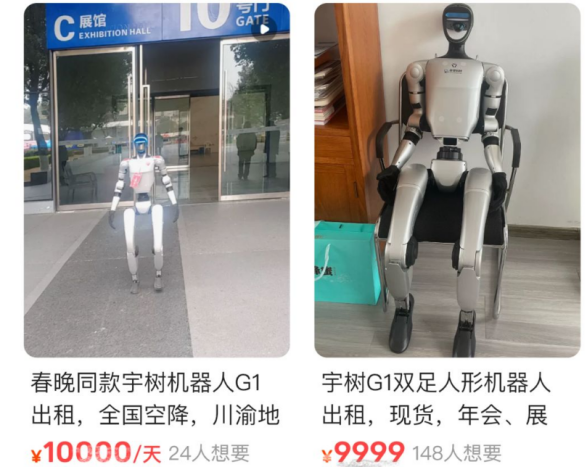春晚机器人变身“打工人” “日薪”高达1.5万元

This year, robots from Hangzhou called Unitree became famous overnight at China’s Spring Festival Gala. They danced a traditional Yangko dance and spun red handkerchiefs, arousing a lot of discussion among people. Now, across China, these robots are making public appearances. In Hangzhou, a food company rented a G1 robot dressed in festive clothing to attract crowds on a shopping street. In Xi’an, a robot joined students at a school opening ceremony to dance the popular “Subject Three”.
The robots people see today are mostly the G1 model, which costs at least 99,000 yuan. Though they’re cheaper than the H1 model used in the gala, many shops online rent G1 robots for 5,000 to 15,000 yuan a day. One rental shop even made over 200,000 yuan this year from just one robot! Demand for these robots has skyrocketed. A sales agent in Chengdu said, “After the gala, orders take 2 to 3 months to deliver. Most buyers are schools and research institutes using robots for education and experiments.”
Wen Feng, who bought a G1 robot last year, shared his story: “I charge 12,000 to 15,000 yuan a day, including a human operator. My robot is booked every day until June.” He earned over 200,000 yuan from just 10 events, already covering the robot’s cost. Even though G1 robots can’t dance, Wen combines its simple moves like walking and waving to create amusing shows, drawing high demand.
While current humanoid robots remain limited in functionality, experts see potential. “They’re more about future possibilities than present skills,” a senior programmer noted. Some businesses are exploring robot-led live streaming and other innovations. As Unitree dominates robot production, smaller companies focus on rental services and creative uses. With their mix of novelty and practicality, these mechanical “workers” will write a new chapter in China’s tech story.
原创编写 版权所有 侵权必究! 每日更新 个性化阅读 英语飙升!